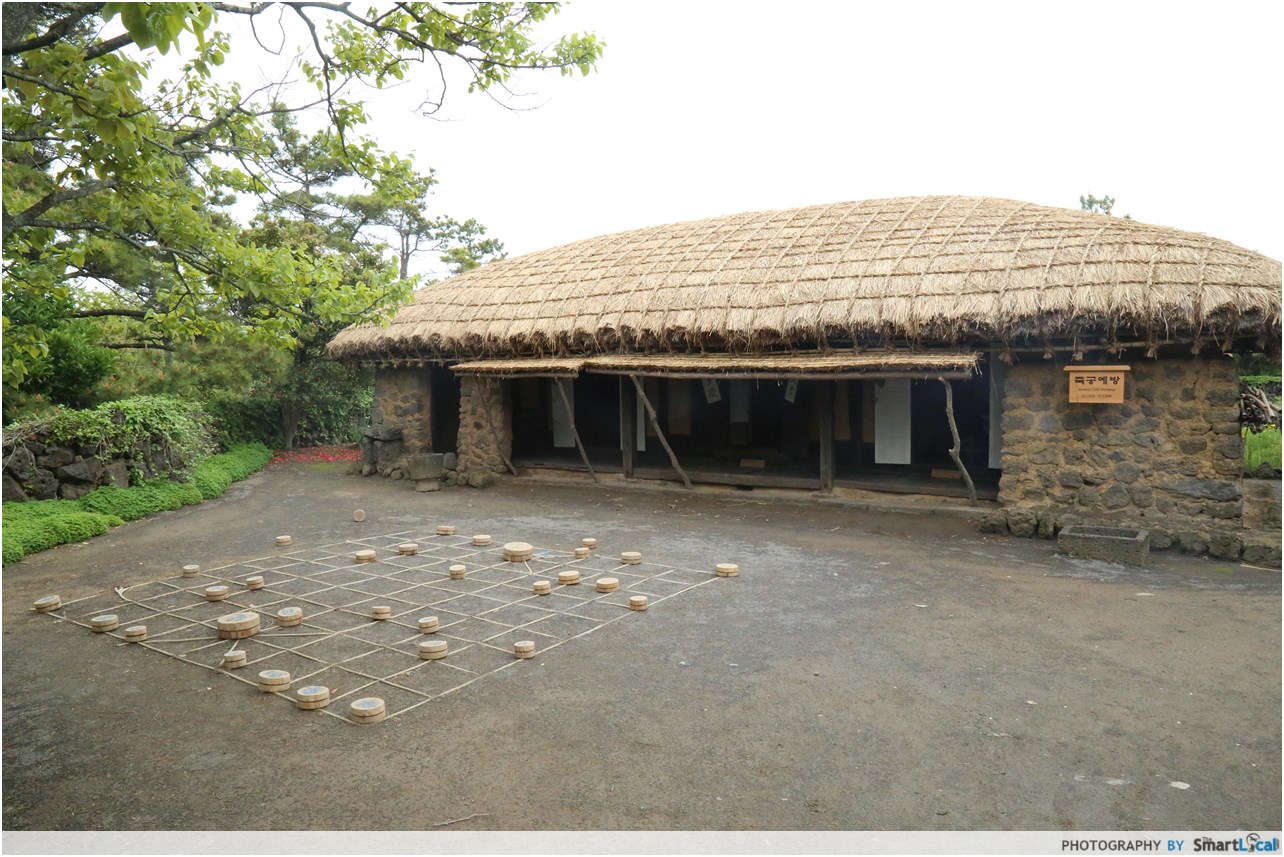Folklore Village
Yangdong Folk Village (Yangdong Village of Gyeongju) is a traditional yangban (Korean Aristocracy) village from the Joseon dynasty. The village is located in Gangdong-myeon, sixteen kilometers northeast of Gyeongju, Gyeongsangbuk-do, South Korea, along the Hyeongsan River. Seolchang stands to the north of the village.
If you visit Folklore Village just once, you might have a very different idea of what the place is than say, someone who visited a month later.
Visit on a Saturday night and you might catch twentysomethings square dancing in Farwell Hall, named for the village's founder and former longtime director, who died in 1993. Visit in the spring and be greeted by foot-stomping Cajun music or a dance around the maypole. A fall visit might bring fiddle lessons in a one-room schoolhouse.
But a visit anytime to this 94-acre site east of Dodgeville will undoubtedly include a fun, cultural experience set in historical buildings on beautiful rolling farmland in Iowa County.
Folklore Village got its start in 1966 when Jane Farwell bought the Wakefield School, a one-room schoolhouse built in 1893 on a plot of land near Ridgeway that her grandfather had donated to the county in the late 1800s.
'From that little one-room schoolhouse — which is absolutely charming — that's where she basically started with all of the activities that we now do,' said Terri Van Orman, who took over as the village's executive director in June.
Farwell had grown up on the village's land — the family farmhouse is still there — but spent most of her adult life traveling the world leading recreational programs centered on folk dance.
She brought that passion back to Wisconsin to create Folklore Village, which today stays true to her vision of creating a place for folk traditions to live on.
'We represent a living tradition,' Van Orman said. 'There are tons of places that you can go that are like historical theme parks, that represent a moment in time that is sort of a dead tradition, whereas we really support the active traditions that are alive and working today.'
Those traditions include ethnic dances and music, with a particular focus on the former.
'Dancing is really our foundation, because Jane Farwell is recognized as one of the founders of the modern international folk dance movement,' Van Orman said.
Many ethnic dances, including monthly barn dances, are held in Farwell Hall. In addition to the schoolhouse and Farwell Hall, Folklore Village also includes Plum Grove Church, which was built in 1882 and is on the National Register of Historic Places, rustic bunkhouses and a 40-acre restored prairie. The village is in the process of restoring a cabin built by Norwegian immigrant Aslak Olsen Lie in 1848 — it's thought to be one of the oldest Norwegian structures in the state.
The grounds play host to 10,000 visitors who come for dozens of events every year, Van Orman said.
'We get all ages at every event — that's one thing I'm most impressed with at this organization,' Van Orman said. 'You look out on the dance floor and there'll be a granny dancing with a teenager and a toddler dancing with a twentysomething. It's great.'
The organization's oldest event is the Festival of Christmas and Midwinter Traditions, which predates the village. Farwell started the festival in Mount Horeb in 1947 with the hope of reconnecting younger generations with various Christmas folk traditions in the face of growing commercialization of the holiday.
The festival, which takes place Dec. 28 through Jan. 1, will include dance lessons with instructors from Romania and Canada, themed afternoon teas, a community art project, yoga, children's programming and of course, plenty of music and dancing.
Most of the village's events focus on traditions related to immigrant groups who settled in Wisconsin — Swedish, Norwegian, German, Swiss. But Van Orman said the organization is working to reach out to smaller groups with events like a Mexican concert last year and an Indian event this past summer.
Through all of the events, the village hopes to remain true to its mission of keeping folk traditions alive from generation to generation.
At the organization's Swedish Festival in October, visitors were treated to music from fiddler Paul Dahlin and his family.
'His grandfather was a famous Swedish fiddler who emigrated from Sweden and also made fiddles, and he passed it on to Paul and his brother, and they've passed it on to Paul's son,' Van Orman said. 'So here's three documented generations of fiddlers who are coming to Folklore Village to teach their family tradition of fiddling. By passing it on, by teaching it, we're ensuring that it will continue to be alive.'
While it's best to visit when there is an event going on, Van Orman said visitors are welcome to stroll the grounds even when there isn't.
'Some people like to come and walk our prairie trails,' she said. 'People can come and walk down to the big tree in the middle of the prairie and sit and observe the wildlife and just listen. It's like being in another world down there.'
The same could be said for inside the buildings at Folklore Village, too. Dragonsoul forums.
Upcoming events: The 67th Festival of Christmas and Midwinter Traditions will be held Dec. 28-Jan. 1.
Monthly events include an open mic night on Feb. 3 and the Healthy Hoe Down Dance on Feb. 7.
Save the dates for the Spring Norwegian Music and Dance Weekend March 20-22, the English Country Dance Weekend April 24-26, the Cajun Music and Dance Weekend May 1-3 and the Maypole Dance Social May 16.
Getting there: Folklore Village is at 3210 County Road BB, Dodgeville, about 120 miles west of Milwaukee via I-94 and Highway 151/18.
More information: Admission to events at Folklore Village varies. For details on a specific event, call (608) 924-4000 or see folklorevillage.org.
Day Out features day trips within a two-hour drive of the Milwaukee area.
Itinerary:8:20 am depart from Hongik Univ.
